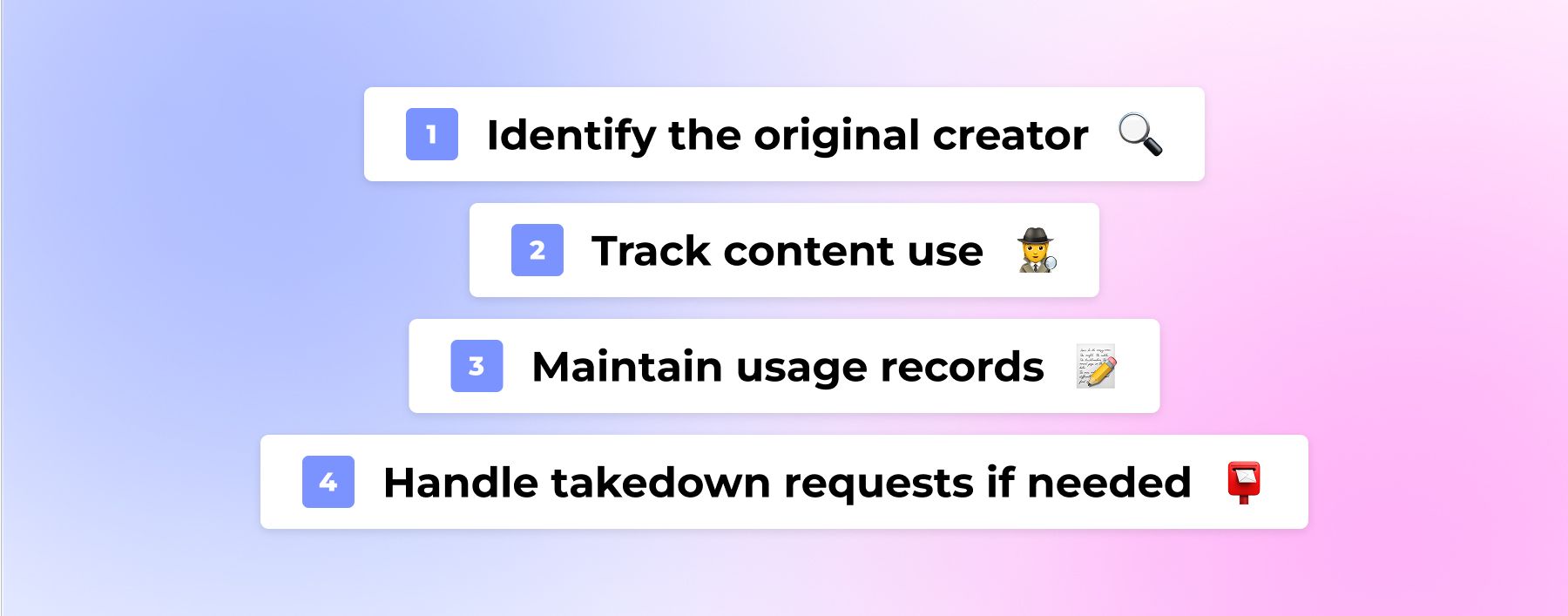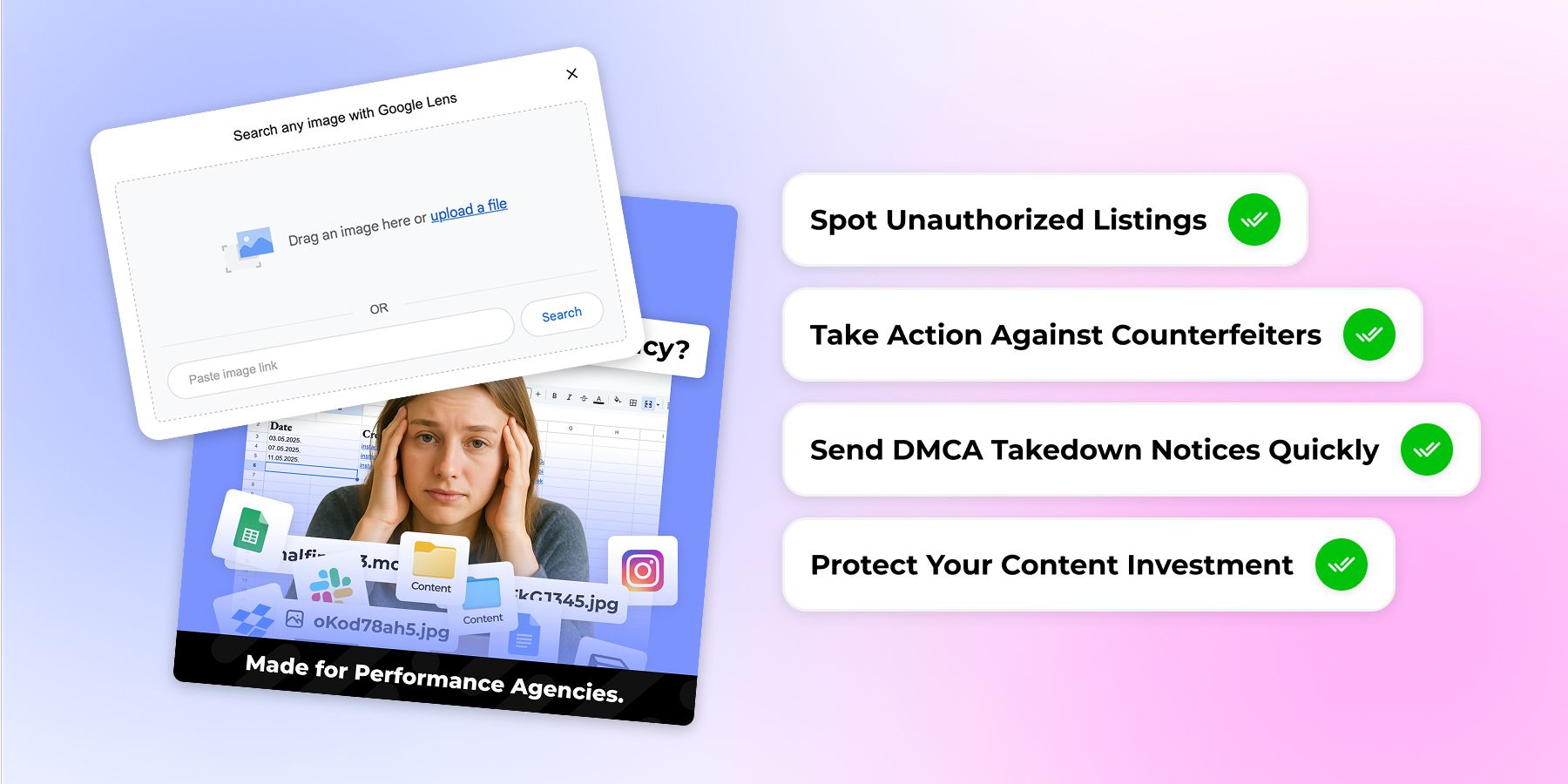
Benefits of Image Search for UGC Rights Management
July 2, 2025

Written By Katja Orel
Lead Editor, UGC Marketing

Edited By Léo Blanc
Head of SEO

Fact Checked By Sebastian Novin
Co-Founder & COO, Influee
User-generated content (UGC) is no longer a trend. Instead, it has become the main point of digital brand engagement. Many brands use it to catch people’s attention, build trust, and influence buying decisions.
For that purpose, they share user-generated content on their websites and social media platforms, especially videos and photos. This technique is remarkably effective and generates outstanding results.
But the issue with UGC is that brands cannot repost a user’s photo on any platform without their permission or checking its authenticity. Otherwise, they might make a wrong call and find themselves in big trouble, as there’s always a legal and ethical risk involved.
And that’s where UGC rights management comes in. And you know what’s the easiest method to verify and manage UGC content? Reverse image search.
Here, we will discuss the benefits of image search for UGC rights management.
What is UGC Rights Management?
It is the process brands use to ensure they have obtained the legal permission to use photos, videos, or other content created by users. The basic goal is to check who genuinely owns the content and to have proof that the owner gave you the right to use it.
It’s not just about asking for permission in the comments. It’s about having systems in place to:
- Identify the original creator
- Track content use
- Maintain usage records
- Handle takedown requests if needed

UGC videos starting at $74

2200+ Vetted Creators in Canada
No matter what type of content, if someone else created and shared it somewhere, you must treat it like licensed content and not use it without their permission. If you use it, you might find yourself in deep trouble. If you’re new to UGC, you might check out this guide on creating and using UGC effectively.
Benefits of Image Search for UGC Rights Management

Image search isn’t just a way to find similar images online. It can also help brands track, verify, and manage user-generated content (UGC) at scale. Let’s discuss the most significant advantages of image search in this regard!
Content Source Verification
You see a great image featuring your product on Pinterest. But was it posted initially there? Was it taken by the user who shared it? Reverse image search gives you answers to these questions.
Upload an image or paste a URL to a reverse image search tool, and you can see where it appeared first. Maybe it was posted on Flickr five years ago, or it was taken by a professional photographer and repurposed without credit. With image search, you can find the true origin of content. And that’s the first step in asking for rights.
Brands can also collaborate with companies like Ayadata, a global AI data and annotation company, for a more robust verification. Aya brings advanced AI-powered image analysis to trace metadata, detect subtle alterations, and validate the original creator, adding another layer of confidence before usage. In some cases, combining reverse search with an AI image detector helps ensure that the content wasn’t AI-generated or manipulated, which further protects your brand from using inauthentic visuals.
Duplicate Content Identification
The internet copies everything. One image might appear on ten platforms with a different caption and username. Therefore, you must not pick any picture and post it on your platform. Instead, get more information about it. And image search helps cut through the noise.
By searching for the image across platforms, you can:
- See who’s sharing the content
- Identify fake or duplicate profiles
- Confirm the original creator
This is crucial for rights management. If you ask the wrong person for permission, that permission means nothing. And if the content has already been overused, it may have lost its uniqueness or even been misrepresented. A quick image search protects your team from using stale or widely copied content.
Legal Risk Mitigation
Without the right to use a photo, you are liable. But proving who owns it isn’t always easy. Some creators don’t list their info. Image search can also help you with it. It lets your legal team identify potential copyright owners instantly. Instead of chasing names or emails, they get a complete online trail of the content’s life. It means faster responses to legal challenges, fewer delays, and fewer cease-and-desist letters.
Brand Reputation Protection
Reputation is everything for brands. In a world where consumers are watching your every move, misuse of a single photo can spark a PR crisis. What appears to be a great campaign could backfire if it includes content stolen from an artist or taken out of context. With image search, you can get a layer of protection. It can help you verify not only the source but also the context. For example, that photo might not have been used to appreciate your product but to mock it.
Image search gives your team a fuller view of the image’s usage. That reduces brand embarrassment. It also helps keep your messaging aligned with your values.
Unauthorized Use Tracking
It’s not just about avoiding other people’s content. Sometimes your brand’s content gets reused without permission, too. For instance, you might spot your product photos on scam websites, fake brand accounts, or unauthorized sellers.
Image search helps you catch that fast. Run your brand visuals through the reverse image tool regularly. You’ll be able to:
- Spot unauthorized listings
- Take action against counterfeiters
- Send DMCA takedown notices quickly
- Protect your content investment
And if creators are misusing branded UGC, for example, turning your product into a meme, you’ll know right away and take further action.

Streamlined Content Approval
As a brand owner, you might know that UGC campaigns often involve large volumes of content. Verifying it or checking its authenticity might take hours without the right tools. And that’s where image search again helps brand owners.
For instance, your team receives 100 user-submitted photos for a product launch. Image search can instantly show whether:
- A photo is original or copied
- The user submitting it is the creator
- It’s been previously used in other campaigns
It can help you quickly select the most helpful content and avoid legal complications.
Conclusion
UGC rights management used to be messy, risky, and reactive. But image search has totally changed the game. It puts power back in the hands of brand owners. With just a few clicks, you can find the origin of content, verify authenticity, catch duplicates, avoid legal trouble, and streamline your approval process.
If you are using UGC or thinking about it, you definitely need a modern reverse image search. It can help you save hours of manual checks, ensure legal compliance, and protect your brand reputation.
Table of Contents
What is UGC Rights Management?
Benefits of Image Search for UGC Rights Management
Conclusion

Work with UGC creators from  Canada
Canada

 Canada
Canada

Sheri
Oshawa

Adam
Gander

Miguel
Toronto

Taydra
New Westminster
